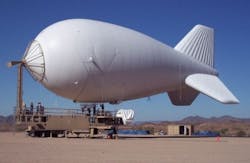Navy researchers seek to automate deployment of unmanned vehicle sensors to support deployed warfighters
ARLINGTON, Va., 29 May 2011. U.S Navy researchers are asking industry to develop advanced autonomous sensing systems and real-time information support for deployed forces that blend intelligence surveillance and reconnaissance (ISR) with command and control (C2) capability to help tactical forces in the field carry out their missions quickly and efficiently.
The Office of Naval Research (ONR) in Arlington, Va., issued a broad agency announcement (ONR BAA 11-023) Friday for the Autonomous Persistent Tactical Surveillance program to help deployed forces keep watch over areas of interest around the clock, as well as to generate orders automatically that will enable friendly forces to respond to situations as they develop.
ONR officials want industry to use open architectures as much as possible in developing solutions to ease systems integration and to share information efficiently.
The intent of the Autonomous Persistent Tactical Surveillance program is to help military forces share information from sparse ISR sensors quickly so they can respond to changing threats involved in counter-insurgency and counter-terrorism. The idea is to give deployed forces the confidence that intelligence information is sufficient for them to accomplish their missions safely -- especially for high-priority missions such as supporting soldiers and Marines who are engaged with the enemy.
Among the goals of the program is to provide the capability to deploy unmanned vehicles automatically to support missions in the field, such as protecting convoys and providing reconnaissance for infantry forces on patrol. Navy researchers are trying to reduce the number of operators necessary to place and activate sensors to support deployed forces.
Once sensors are deployed and activated, Navy researchers also want automatic data processing for the resulting enormous volume of data. Researchers especially want to develop the ability to organize knowledge at the tactical and strategic levels; assess large volumes of imagery and full-motion video; express the information needs of tactical missions; and align information analysis and sensor resources.
The project seeks to solve problems related to mission planning and direction, data processing and exploitation, mobile sensing and production, as well as the ranking in importance, dissemination and use of sensor data.
The Autonomous Persistent Tactical Surveillance program has three primary thrusts: 1) mobile autonomous ISR to C2 synchronization; 2) autonomous information-based surveillance control; and 3) contextual enterprise information.
The mobile autonomous ISR to C2 synchronization portion seeks to establish the necessary standards and patterns that enable sensor and data analysis nodes to anticipate the information needs of the tactical warfighter.
The autonomous information-based surveillance control portion seeks to develop autonomous sensing system that blends sensor data with mission plans and routes to provide persistent surveillance for unmanned vehicles over a regions as large as 40 by 40 nautical miles.
The contextual enterprise information portion seeks to develop computer tools to assess the coverage of sensors, pull out relevant information to support missions on the ground, and add sensor coverage where necessary.
ONR plans to award one or more contracts for each of the three thrust areas outlined above. Companies interested in participating in the Autonomous Persistent Tactical Surveillance program should submit white papers by 13 July 2011, or with full proposals no later than 12 Sept. 2011.
For questions or concerns on the first portion of Autonomous Persistent Tactical Surveillance program contact ONR's Martin Kruger by e-mail at [email protected], for the second portion contact Michael Pollock at [email protected], and for the third portion contact Gary Toth at [email protected].
More information is online at https://www.fbo.gov/spg/DON/ONR/ONR/ONRBAA11-023/listing.html.

John Keller | Editor
John Keller is editor-in-chief of Military & Aerospace Electronics magazine, which provides extensive coverage and analysis of enabling electronic and optoelectronic technologies in military, space, and commercial aviation applications. A member of the Military & Aerospace Electronics staff since the magazine's founding in 1989, Mr. Keller took over as chief editor in 1995.

